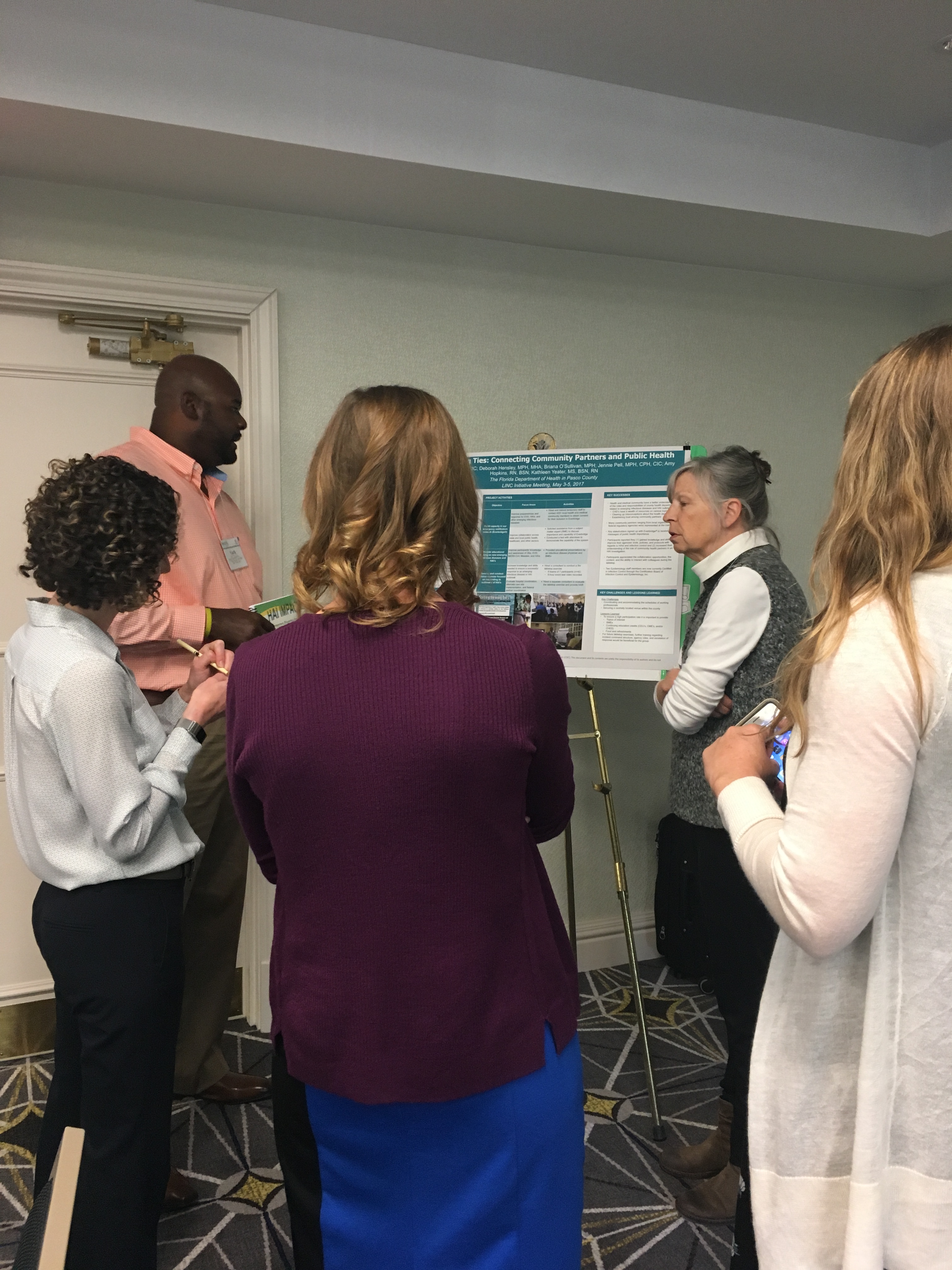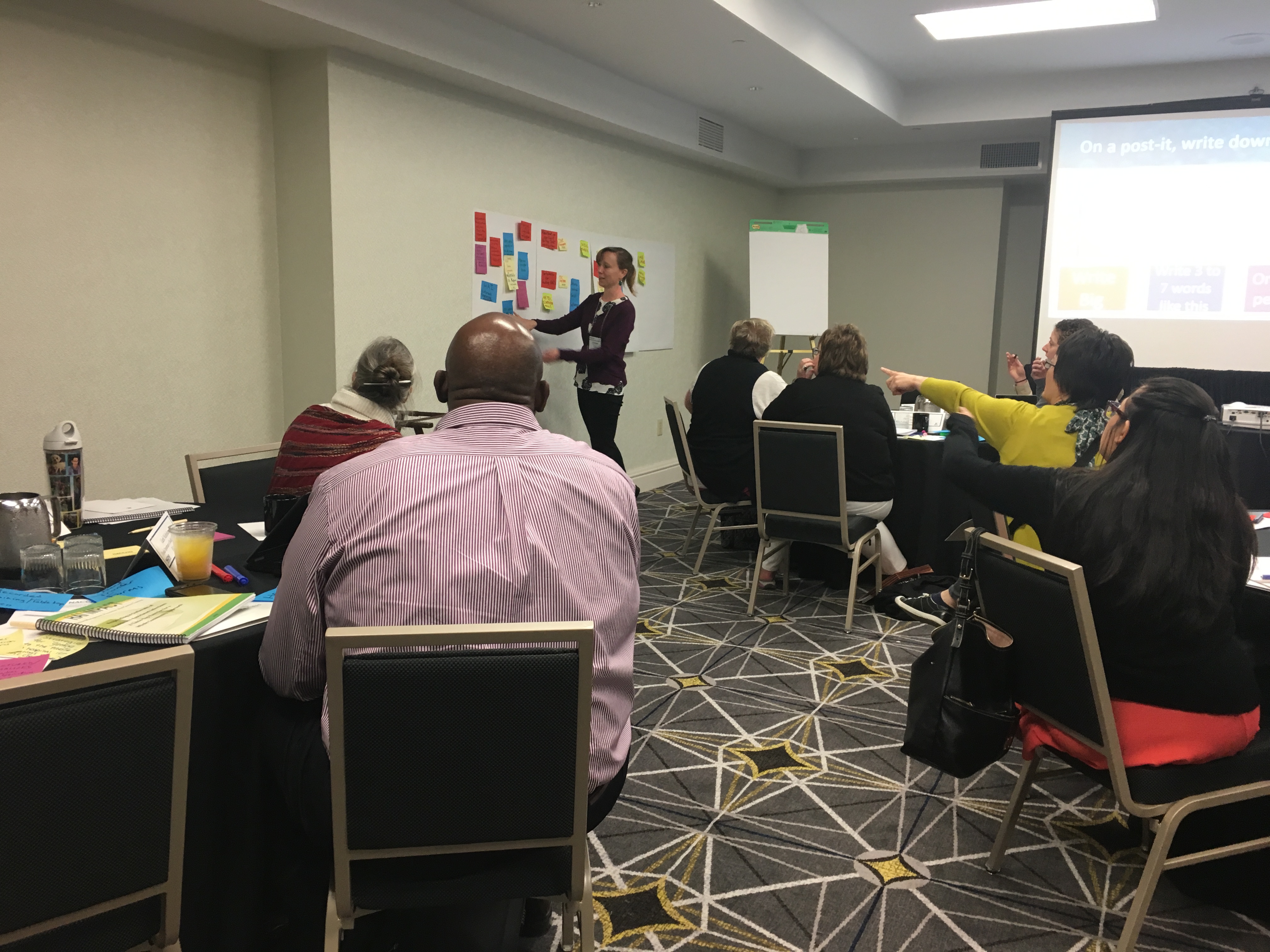It is more and more common to open up your newspaper or browser and see a news story about the latest superbug, the hunt for new antibiotics, or the spread of an infection within a healthcare facility. In fact, antimicrobial resistance and healthcare-associated infections (HAIs) have come to be widely recognized issues that must be addressed in partnership with – not in isolation of – one another. Local health departments (LHDs) are on the frontline of this work and serve as a vital part of the solution by facilitating coordinated approaches to interrupt the spread of HAIs.
LHDs work with healthcare providers to assess infection control capacity, advance healthcare knowledge by sharing best practices and resources with community partners, and improve regional infection control infrastructure and coordination to minimize the spread of HAIs. Like the healthcare providers and facilities they support, however, they cannot do this work alone and are in a position to learn from one another and leverage resources and expertise to make progress on these pressing issues. In this blog post, we explore how NACCHO, in collaboration with the Centers for Disease Control and Prevention (CDC), has supported LHDs with funding and forums to facilitate capacity-building and improve infection prevention and response through the power of peer-sharing.
Building Capacity to Address Today’s Public Health Threats
NACCHO’s work to support LHDs in addressing HAIs began with the initiation of a demonstration site project to engage LHDs in state and regional HAI prevention activities. Through annual symposiums, collaborative strategic planning and one-one-one technical assistance, the demonstration sites – located in DuPage County (IL),  Philadelphia (PA), and Orange County (FL) – strengthen provider relationships and ensure opportunities for information sharing with the goal of improving their jurisdictions’ antimicrobial use and infection control practices.
Philadelphia (PA), and Orange County (FL) – strengthen provider relationships and ensure opportunities for information sharing with the goal of improving their jurisdictions’ antimicrobial use and infection control practices.
NACCHO connects the HAI demonstration sites monthly via teleconference which allows them to learn from each other and maximize their collective experiences. Through these calls, they brainstorm solutions to challenges, share materials and resources, and exchange ideas. Additionally, staff at the demonstration sites have the opportunity to attend national conferences. This networking leads to a diffusion of ideas and as LHDs outside of this project have begun taking on similar work, they have been able to leverage the knowledge, best practices, and resources of NACCHO’s HAI demonstration sites by connecting with them either directly or through NACCHO. As Dr. Eileen Farnon, MD, Medical Epidemiologist for the Philadelphia Department of Public Health noted on a recent call, “Attending conferences and learning about what other LHDs are doing across the country is extremely important. These opportunities are very valuable for us at the local level.”
From planning educational events to conducting social network analyses, NACCHO’s HAI demonstration sites have significant experience and expertise to offer other LHDs working in HAI prevention and control. These three health departments have not only demonstrated the value of investing in community partnerships and bolstering communication to prevent and respond to HAIs and address the growing threat of antimicrobial resistance, but they have also served as a reminder of the power of peer-learning and resource sharing. And while this project proved successful in preparing LHDs for the known threats of HAIs and antimicrobial resistance, it also opened the door to an opportunity to help LHDs prepare for the unknown.
Leveraging Local Experiences to Prepare for an Unpredictable Future
The 2015 response to Ebola highlighted both weaknesses and strengths in the national public health system, and the spread of Zika virus – an infection that can be both sexually transmitted and carried by mosquitoes – continues to serve as a reminder that there is always a new and unpredictable challenge ahead. As LHDs reflect on these and other emerging infectious diseases to prepare, strengthen capacity, expand relationships, and apply lessons learned from previous responses, it can be invaluable to go beyond the scope of one’s own organization and hear the stories, successes, and  challenges experienced by other LHDs. As such, in addition to the HAI demonstration site project, NACCHO launched the Lessons in Infection Control (LINC) initiative in 2016. This project supported 11 demonstration sites as they increased health department capacity to improve healthcare and community infection control, and enhanced coordination for preparing and responding to Ebola, healthcare-associated infections and other emerging infectious diseases, through strengthened local public health organizational and administrative capacity, expertise, and partnerships with key stakeholders.
challenges experienced by other LHDs. As such, in addition to the HAI demonstration site project, NACCHO launched the Lessons in Infection Control (LINC) initiative in 2016. This project supported 11 demonstration sites as they increased health department capacity to improve healthcare and community infection control, and enhanced coordination for preparing and responding to Ebola, healthcare-associated infections and other emerging infectious diseases, through strengthened local public health organizational and administrative capacity, expertise, and partnerships with key stakeholders.
Many of the demonstration sites funded through the LINC initiative were nascent in their involvement in HAI prevention and response, a persistent threat in the broader scope of emerging infectious disease. They built new or strengthened existing coalitions, provided trainings to healthcare providers, supported inter-facility communication, and hosted tabletop exercises to test readiness for outbreak response. All of these activities necessitated developing tools and resources—flyers, training materials, tabletop manuals, transfer forms, and more. As a result of their work, NACCHO recently launched Healthcare-Associated Infections: A Toolkit for Local Health Departments to support LHDs in combatting HAIs. Developed in coordination with the LINC demonstration sites, this toolkit provides LHDs with guidance, best practices, tools, and resources for expanding activities related to improving local infection control, preparedness, and response.
As demonstration sites, part of their challenge was to develop these resources without the benefit of a compiled list of examples from the local level (such as the HAI toolkit they helped to produce). To alleviate this challenge, the sites had the opportunity to strengthen their health department capacity by attending national meetings and conferences where they could learn from and connect with others doing similar work. Feedback on these opportunities served as a reminder of the immense value in being able to hear that other health departments are facing comparable challenges and how they are tackling them, and the importance of having examples to reference when starting a new endeavor. Now, their lessons learned can serve as a foundation for other LHDs taking on this work.
Through these two projects, we are reminded that by strengthening knowledge and capacity, LHDs are better able to prevent and respond to HAIs and therefore better protect the very communities they serve. For more information, contact Christina Baum, NACCHO Program Analyst, and be sure to download our new HAI toolkit to find resources for your LHD.








